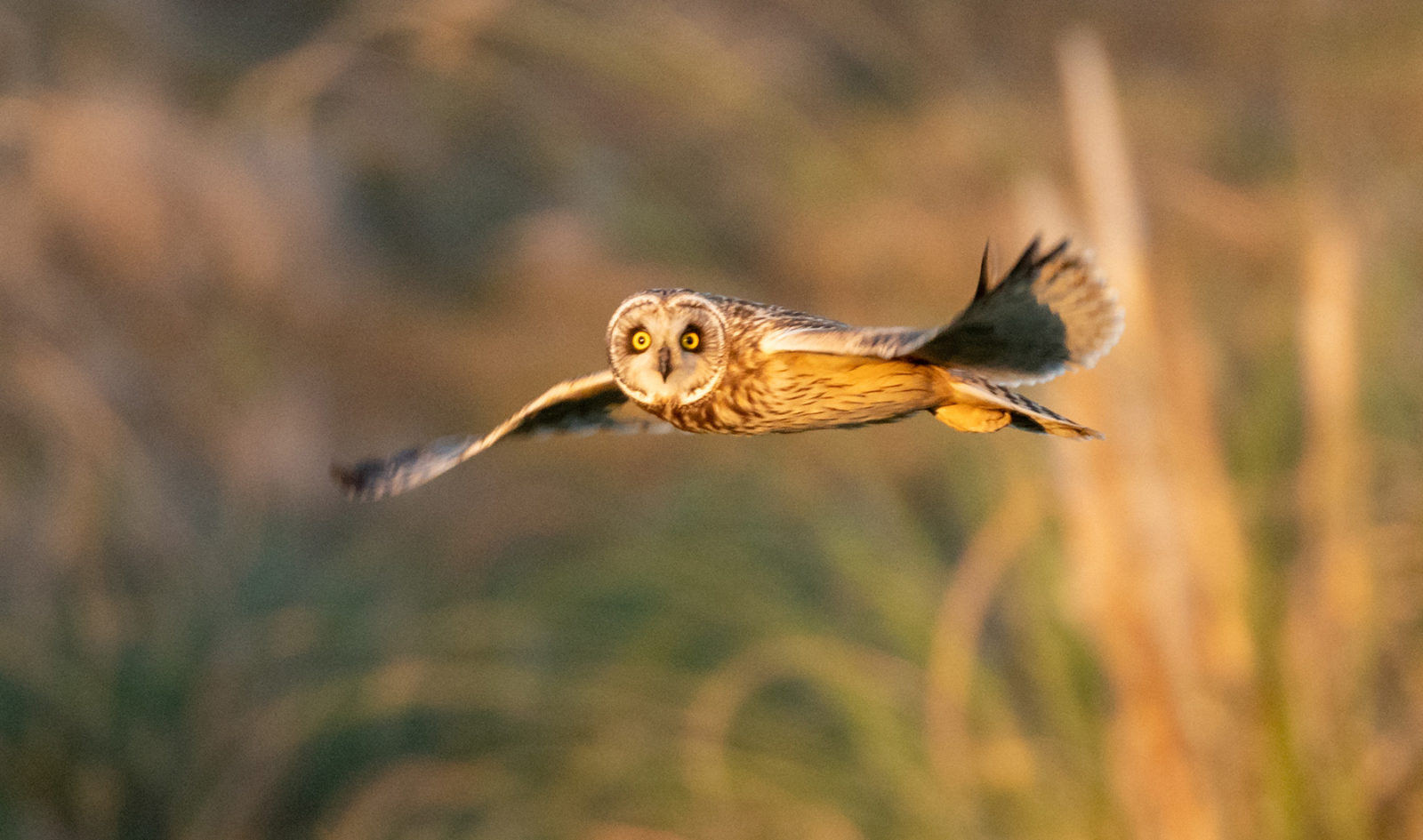I’m not usually masochistic. But then I spent three months this winter trying to observe extremely elusive short eared owls in a busy park in the inner Bay Area. (I’ll omit the location in order to preserve a semblance of their privacy.) From this I learned patience, frustration, and futility. Each outing was a Zen exercise in holding no expectations. Each day’s outcome disconnected from the one before. Short eared owls exquisitely randomize their behavior. One afternoon’s success did not build on the next. It took me three months to recognize the larger patterns of their movements.
“Subtle and insubstantial, the expert leaves no trace; divinely mysterious, he is inaudible. Thus he is master of his enemy’s fate.”
– Sun Tzu
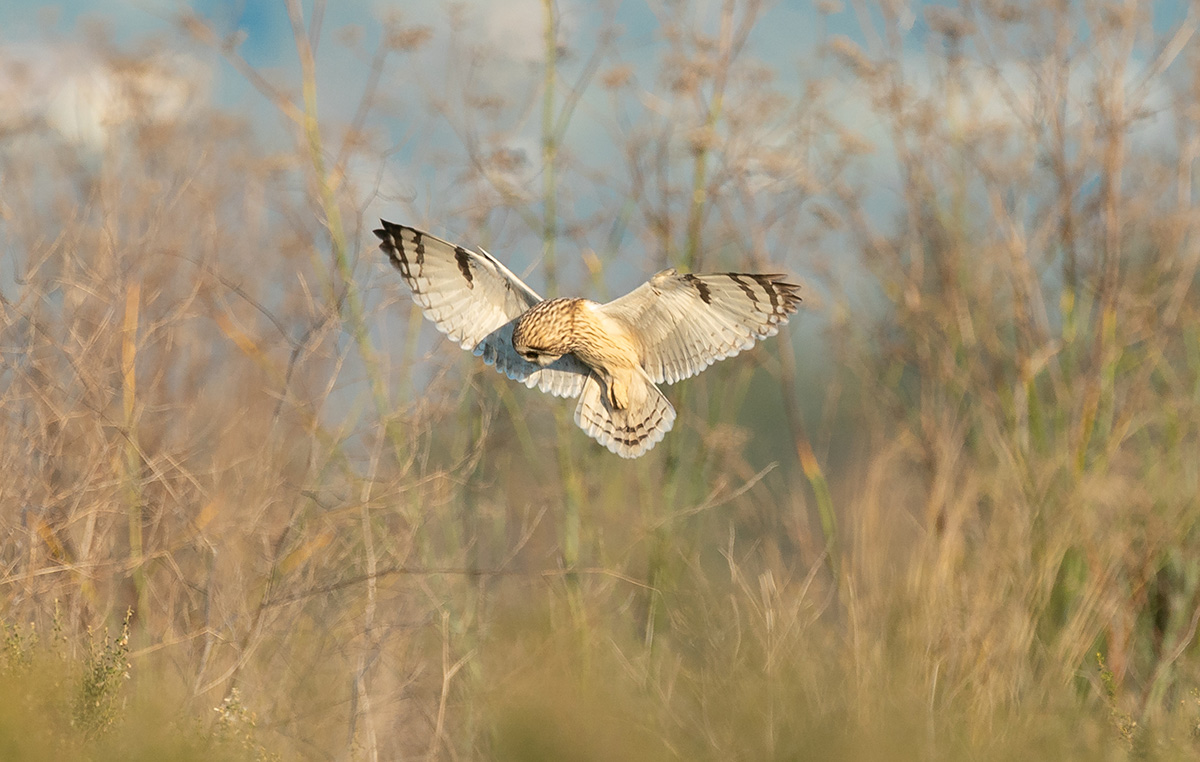
Short eared owls evade human presence similar to the way that dogs sleep. That is to say, habitually. It’s always a good time to fly far, far away and they rarely miss an opportunity. Even eye contact from 200 or 300 yards may seem to crowd a short eared owl and induce flight.
Born in ground nests, SEOs are very vulnerable from the start. Everything is a threat to eggs, and to young owlets until they fledge. Foxes, skunks, ravens, hawks and coyotes would all eat an egg or even an owlet. Finding new ways to run away is a key to longevity.
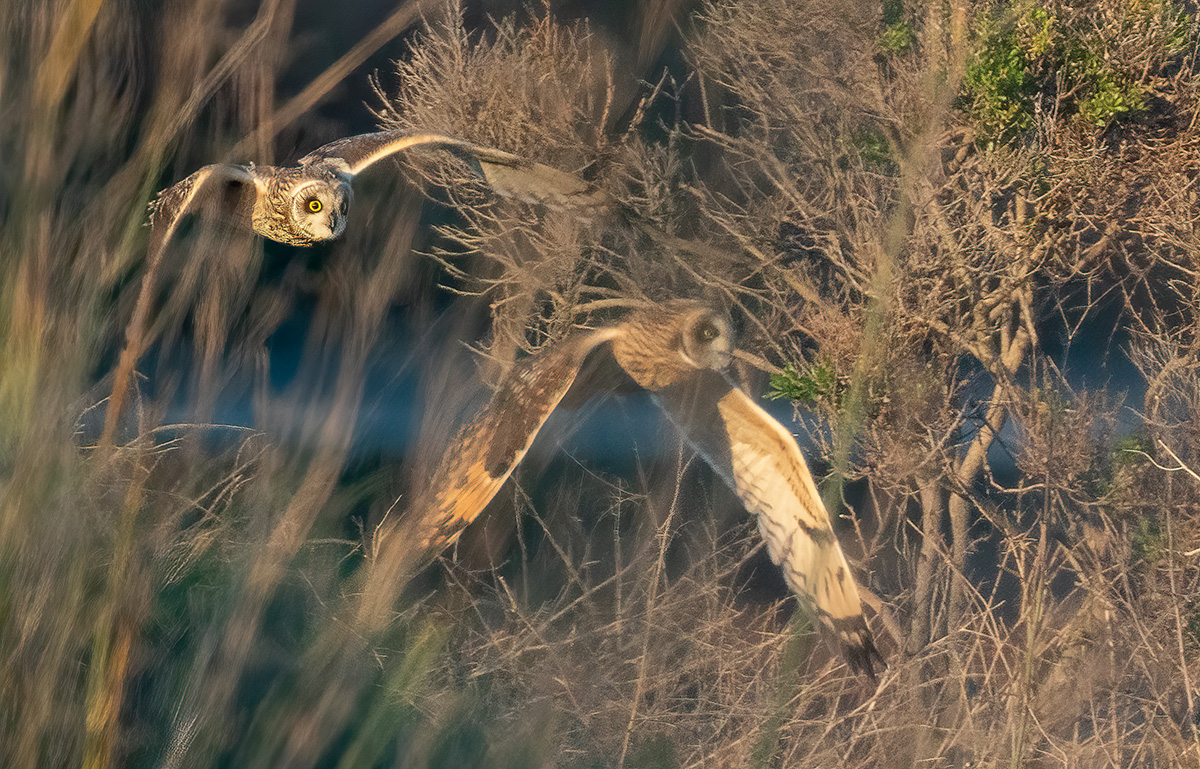
Despite that avoidance behavior, I saw enough to make a visual record worth sharing – of the parents flying, hunting, hiding and finally their fledging young learning to fly and hunt in turn. A few things I learned:
- SEOs exist literally below human vision. They fly, hunt, and nest as close to the roots of brush as possible. Once on the ground, their camouflage makes them almost undetectable to the human eye.
- They are mesmerizing in fluid flight, and aligned with the wind and the contour of terrain.
- These auditory hunters anticipate and avoid hunting during the re-ocurring sounds in their environment – like the nightly honking of settling geese.
- They ration their harvest from rodent burrows. Rarely did I witness them hitting the same location twice in a row.

The Art of Owl
Seeing any kind of owl at all is rare. Daytime hunting by owls is rarer still. The short-eared’s preference for flying over unbroken grassland an hour before dusk lets a human with binoculars watch their patterns. We can note both the shapes of its body in flight, and the shapes of the routes it traces in space.
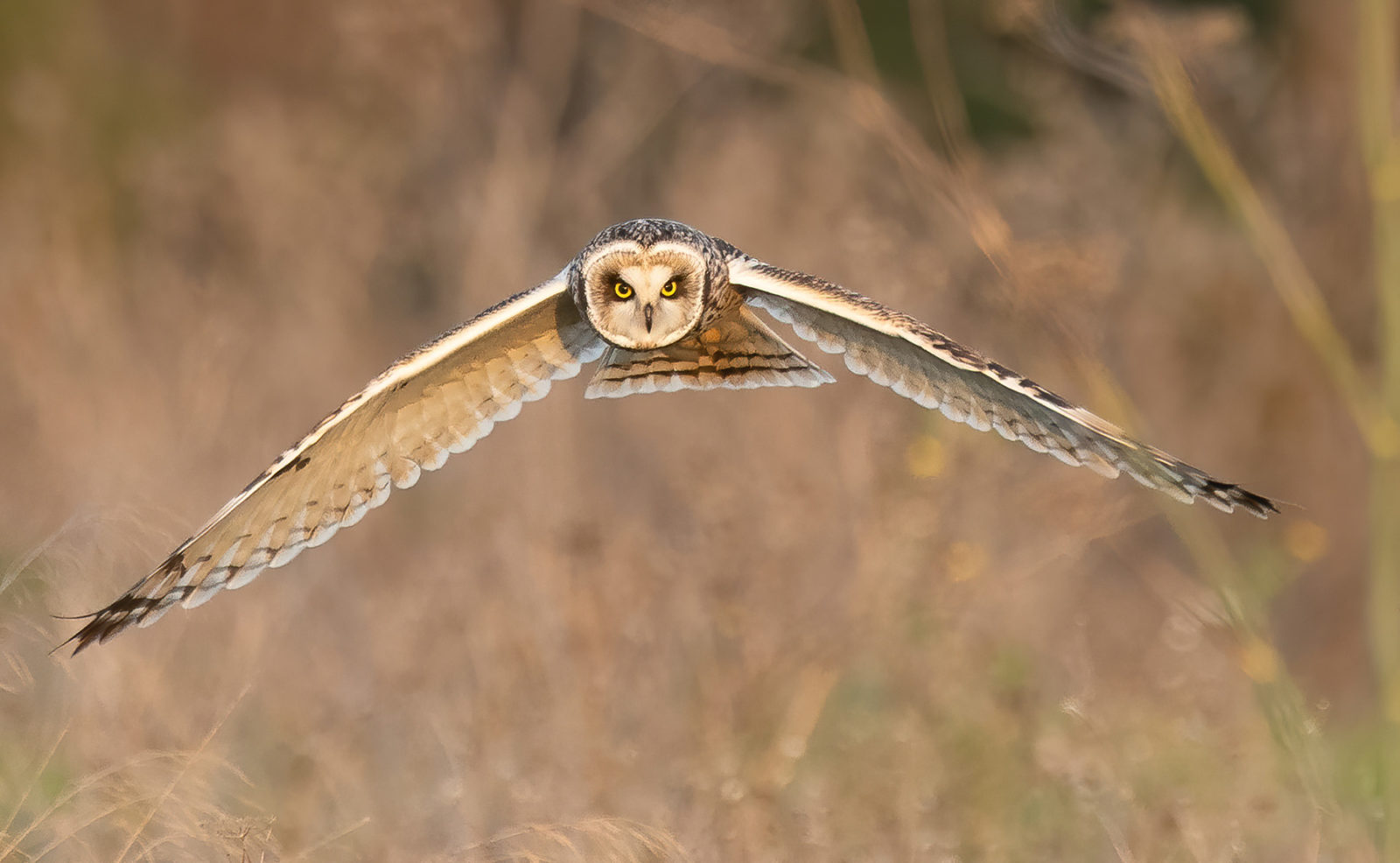
The paths and patterns SEOs fly are like a 3D map of deception. Their tactics are nature’s textbook in evasive maneuvers. When near their nest, they fly away like an arrow through the grassland, unseen. When far from the nest, they feint and make a show of being in one area. And then they dive for the grass tops and shallow ridges to hide their movements. And then they just disappear. They make ellipses and Cassini ovals. Snake curves, slinky spirals and helixes. The math varies, but the result is the same — vanishing.
“When able to attack, we must seem unable; when using our forces, we must seem inactive; when we are near, we must make the enemy believe we are far away; when far away, we must make him believe we are near.”
– Sun Tzu

One favorite way to avoid a harrier is to wait for it to fly over, and then take silent flight behind it. Another is to pretend to have created a nesting site far from the real one. Or maybe fake the abandonment of the entire area altogether for a day or two to lead the harrier far astray. Aerial combat is a last resort. Our local short-eared owl mostly played defense. Which made their occasional offensive strikes all the more stunning to the harrier (and me).
Successful Nest

Nest-building and mating occurred outside of my view. But I got to witness some courtship flying, and some food exchanges and hunting in tandem. When most involved with each other, or getting food, (or avoiding harriers), they are easier to watch.
Finally in late February, two became four. One day, fledging owlets emerged from the nest right after the parents. True to evasive form, all four birds flew together, dipped low behind a ridge and then scattered in different directions at different altitudes. Like most adolescent animals, the babies needed to play and practice hunting, flying, chasing and fighting. This day they gave a glorious show to the only person on the path as they soared and swooped and stalled on a light warm west wind.
“To seek is to suffer. To seek nothing is bliss.”
– Bodhidharma
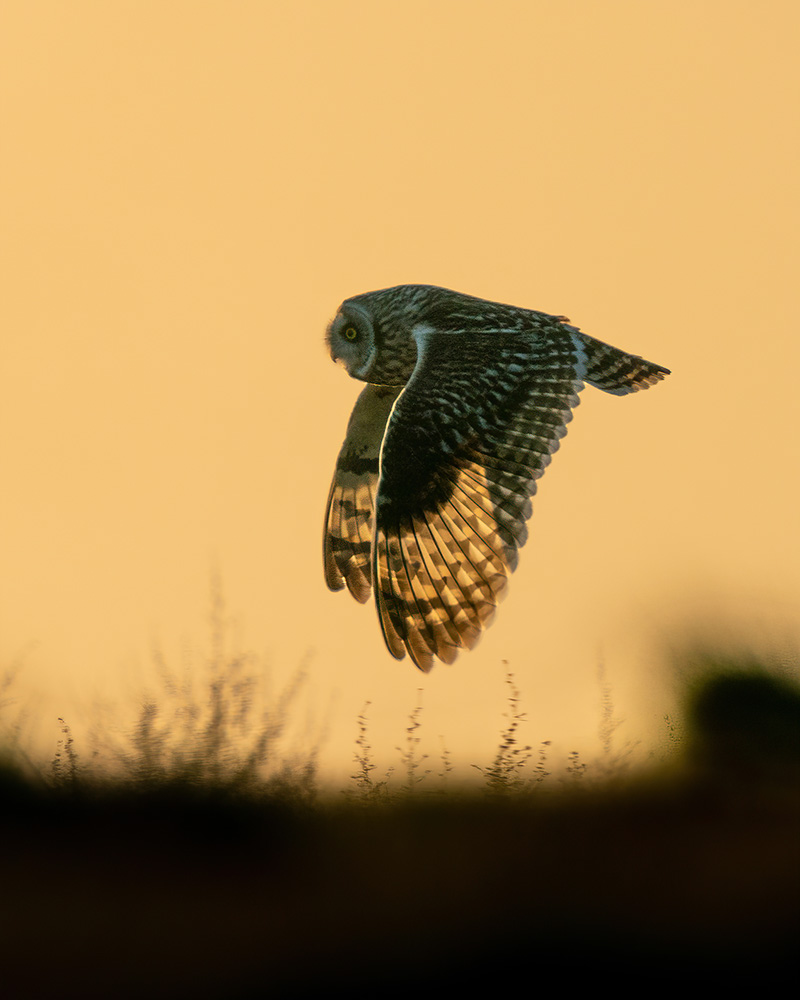
In the end, my three months of learning were far from a sacrifice. I got to witness so much. A large clutch of bunnies were born near the owl nest, and I watched them play for the first time in the open. White-tailed kites hunted daily and paired off. Even the harriers had a baby – or maybe the male took a second mate (they can have up to five.) I couldn’t be sure. Even the local barn owl appeared in all its beauty and gave me a few dusk shows, before its tree nest was downed by a January storm.
It makes sense that short eared owls have learned and evolved to evade attention as a core skill set. Their beauty makes them hard to resist. Only the high cost of getting a glimpse deters me from trying to go and watch them every day. I’ve shared images here so that you don’t have to wear camo and hide in the brush just to see this beauty.
